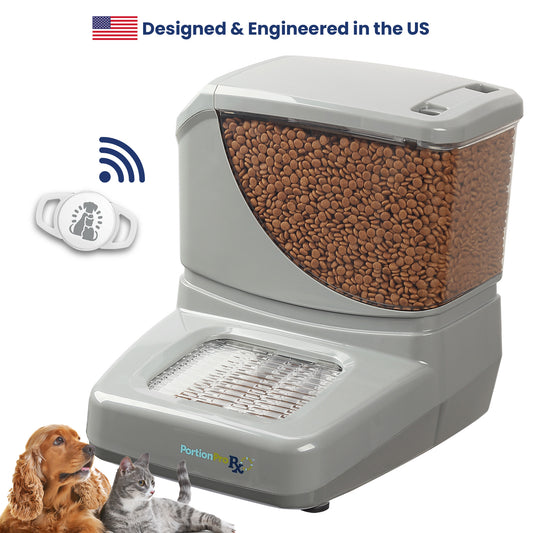For many cat owners, microchipping your furry friend is an important step in pet ownership. But for many, questions can arise regarding the safety and purpose of implanting them into your pets skin. For products such as our PawsPik Automatic Microchiip RFID Pet Feeder, microchips are the essential component to ensuring that the automatic cat feeder functions properly. Other products, universal scanners and microchip pet feeders, utilize these chips as well. Today we’ll be answering all questions surrounding microchips, what they are, and what they do to keep your furry friend safe!

What are pet microchips?
Pet microchips are small electronic devices that are implanted into your pet, typically between the shoulder blades. For most pets, there are 3 different frequencies of chips that they can get. The most popular being ISO (or 134.2 kHz) as it is considered an international standard, meaning that it is used in various countries around the world such as Canada and Japan! Other frequencies include 125 Khz and 128 kHz, though both are used solely in the US and are provided by a more limited number of manufacturers.
What do microchips look like?
Pet microchips can be as small as a grain of rice. Inside each microchip contains passive RFID transponders that contain a unique ID number to be read by scanners. They are typically made of bioglass which is not toxic to pets so they won’t experience any sort of allergic reaction after injection. Or alternatively some can be made from a type of polymer to ensure that the chip stays in place.
What does a microchip do for my cat?
The main reason that pet parents get their cats microchipped is for identification purposes. In the scenario that a pet is lost or stolen, being able to scan their embedded chip can help ensure that they are easier to find if they are lost. Unlike tags and collars, which can be taken off and removed, having the chip implanted under the skin provides many owners with a better peace of mind knowing that their furry friend has a constant internal form of identification on them.
How do microchips work with automatic microchip feeders?
Aside from just being used as a form of identification, many pet companies have taken advantage of these chips by creating products utilizing their RFID technology. For products such as our PawsPik Automatic Microchiip RFID Pet Feeder, microchips are a must-have, as they are what ensures that your feline friend is able to receive the proper access to their meals while keeping any food stealers out! Even if your pet is not microchipped, they are still able to use this microchip cat feeder with our included RFID tags. Which features an embedded ISO microchip. Making our automatic pet feeder accessible for all pet parents!

So should I get my cat microchipped?
For any owners that may be on the fence about whether or not to get their cat microchipped, getting your pet chipped can provide a number of benefits. Not only giving you peace of mind, knowing that if they become lost that they can easily be identified, but also opening doors for them to use a number of pet tech products such as our microchip cat food dispenser, to make meal times easy and stress free. Investing in getting your cat chipped is one of the best decisions any pet parent can make!



